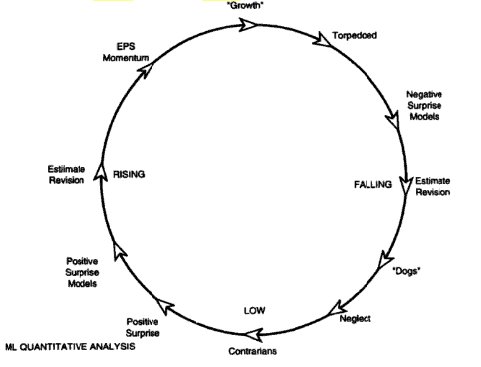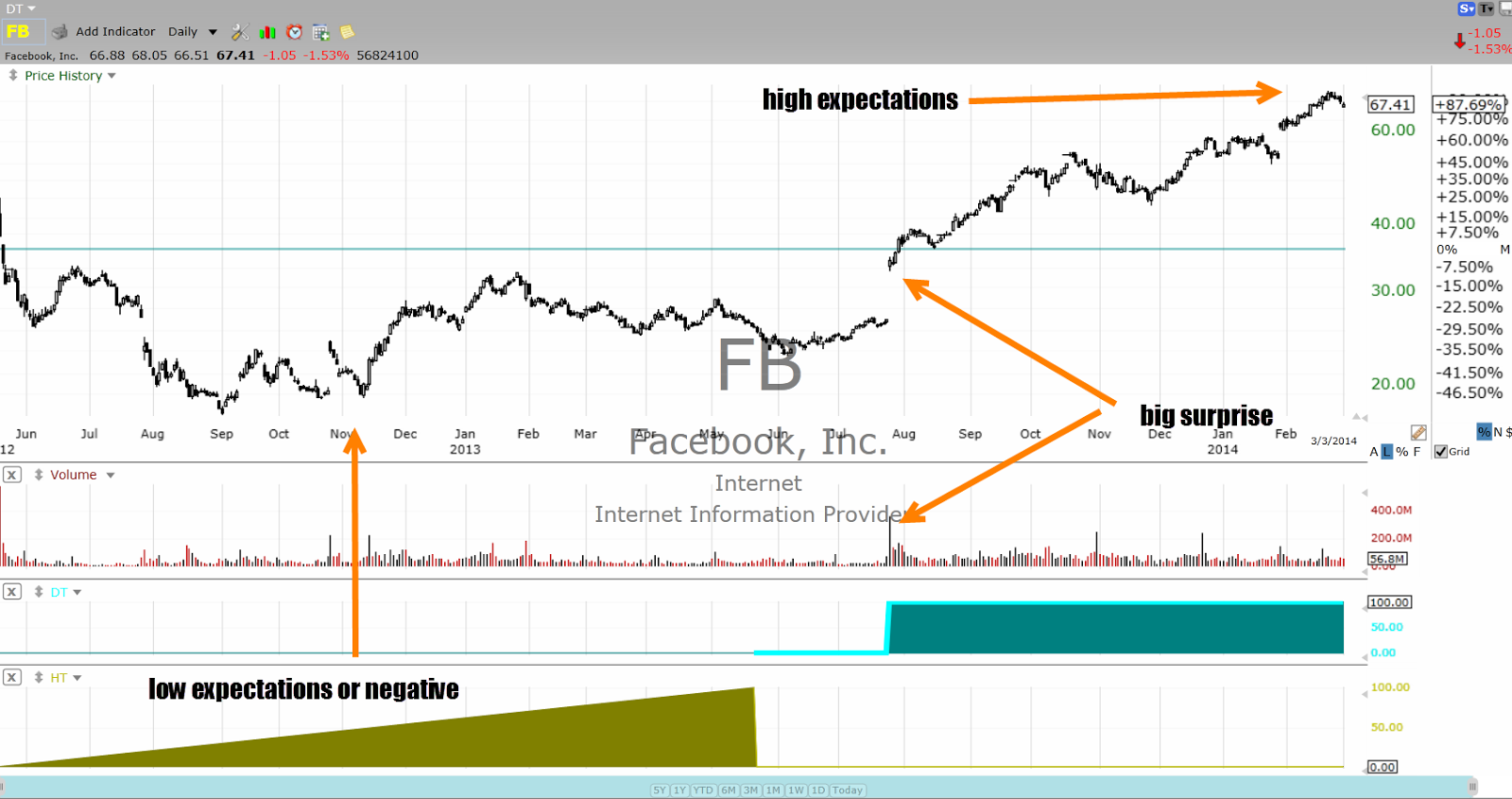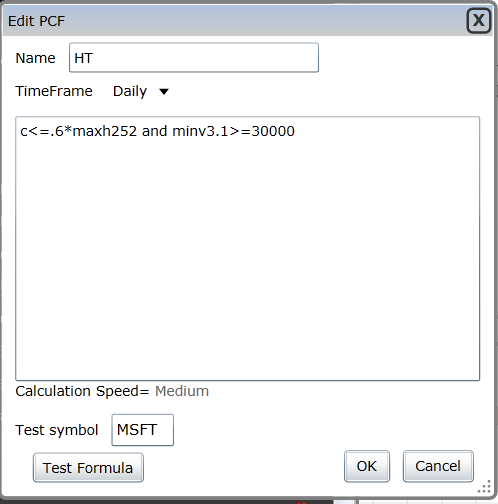
Thomas N. Bulkowski has studied data from 1990 to 2008 on stocks that doubled . He found two key things:
● Stocks that double substantially outperform the following year 53% of the time.
● Stocks that drop 50% or more outperform the following year 68% of the time
The Half Trouble approach that I use is focused on stocks that drop 50% or more in a year. They are stock in deep trouble , but if suitable catalyst comes in they can go up several fold quickly.
I start looking at these stocks once they drop 40% from 52 week high. In next one year or so some of those stocks go on to make explosive 300% plus moves.
JCP which we bought in in Working People Portfolio sometime back is a example of this kind of stock. As you can see in chart below, it was beaten down stock and down more than 50% from 52 week high. Everyone had a very low expectations for this stock.
It was heavily shorted. A recent earnings news lead to the start of this move and stock is already up 90% from low. If the turnaround sticks, you are looking at further gains.

By systematically and daily tracking them and proactively looking for a possible catalyst we will be ready when the stock is ready to explode.
Stock go through expectation cycle. For low expectation or negative expectations they move to extremely high expectation or darling status.
At low expectations level they are neglected and at high expectations level everyone wants to buy them. They become market darlings.
But the romance does not last and ultimately there are heart breaks and negative surprises. If you are looking for good short candidates do reverse of this and track stocks up say 500% plus.
Sooner or later in next one year they will become good short candidates as the old darlings are dumped for the next young and pretty thing.

One of the biggest winner for last year for me was FB, it was also found using similar watch list. It got dumped more than 40% from IPO high and subsequently took off after earnings surprise.

FB from neglect to market darling
This approach is more suitable for research based speculators with longer holding timeframe.
The first starting point in the Half trouble approach is to look at scan candidates and find out why they are down and is it because of secular reason or temporary reason. The secular trends will require long time to play out. The temporary variety are low hanging fruit.
Temporary setbacks get fixed easily and stock bounces back. While that kind of situation is good , it seldom leads to explosive multi month move. The big explosive multi year turnaround happens on the most neglected and stocks with big problem and negative outlook that manage to turnaround.
Stocks often bounce back once they get cut down in to 40% level, so in addition to scan you need to maintain a database . For example NUAN is now marginally up but it was a HT candidate few weeks ago and should still be tracked as that. You should be willing to track these candidates for more than 2 to 3 years. The one that spent long time getting cut are the most attractive candidates when surprise arrives.
One of the temptation will be to buy early. If you do that you will have portfolio full of duds that might get cut in half multiple times. You have to wait for catalyst to show up or buy just ahead of catalyst.
In addition to the stocks adding ETF that are down 40% plus from high will allow you to find ETF near their trend start.
I have a combined list of ETF and Half Trouble scan candidates I monitor daily:
Symbols from Half Trouble Universe I monitor
OXF
YANG
GFI
HMY
ARCO
ERY
EDZ
TZA
SRTY
OFIX
DGAZ
JCP
UVXY
CPL
HXM
FBP
ELP
ARO
ELNK
TVIX
TWM
MPO
MIDZ
FIO
SBS
DRD
UGLD
SPXU
SOXS
SPXS
XCO
FAZ
LBTYA
ASPS
KOLD
RSH
VXX
MHG
KOF
VIXY
VIIX
SQQQ
NUGT
EIG
EC
SDOW
PULS
EBR
CVOL
BIS
CALX
SKF
QID
CIG
TECS
OIBR
TFM
LBTYK
FSYS
AGI
BVN
RDNT
DSLV
UTIW
NEM
BWP
CVRR
USLV
PBR.A
GSEH
BXC
INTX
EMITF
AT
LDK
SGI
AGQ
ANFI
UNTD
DMD
QUAD
NTE
AEPI
CZZ ( largest sugar producer)
CLNE
JAKK
ZNH
EZPW
LFL
FRAN
GFA
ALDW
XNY
SFY
ADT
LULU
CDE
OSTK
NVTL
INWK
BSBR
KGC
BBY
HERO
WTSL
IAG
CCCL
SQM
GMAN
CLUB
PBR
CALI
YZC
RT
AVP
RCII
DUST
ACW
NBG
IOC
AAWW
RNDY
NTLS
AVNW
DRV
SHOS
NIHD
BIOS
TWGP
WTW
TUR
WAC
GOL
CVI
CETV
ICA
PBF
FST
XIN
CNCO
EROC
RNF
BIOF
RIOM
MLNX
MTL
DLLR
YRCW
MX
NUS
NSM
SODA
LF
RDEN
HGG
BTH
BBRY
END
VRS
TITN
RLOC
XXIA
USU
TC
JRCC
BGFV
ZA
SOL
RAX
DRL
LRN
EDMC
ANR
CONN
YINN
SID
HK
TECUA
HSOL
RUSL (keep an eye, this can bounce back 30 to 50% quickly)
CWTR
WLT
LINC
CSUN
APP
IO
CRRS
FFHL
ALSK
GSS
COCO
BONT
NES
Why are these stocks showing up in this scan? Can you classify them into groups. like below.
Some of the common reason for a big drop are:
1. excessive bullishness driving stock to unsustainable level resulting in subsequent drop
2. loss of earnings power
3. high cost
4. high debt
5. management changes
6. outdated technology
7. faulty business model
8. industry structure change
9. fashion or craze product loses appeal
10. overall economic slowdown
11. replacement product at lower price
12. mergers gone wrong
13. product recalls
14. natural disaster
15. regulatory action
Telechart Scan for Half Trouble
c<=.6*maxh252 and minv3.1>=30000
c= closing price today
maxh252= highest price in last 252 days
minv3.1= minimum volume in last 3 days
The scan gives you stocks that have gone down at least 40% from their one year high and that have last 3 days volume above 30000 for each of the day. Beaten down stocks can often become neglected and can have lower daily volume near bottom.
The scan will give lot of small caps stocks. I want to focus only on stocks with revenue above 300 million. The smaller stocks are more speculative and difficult to track. By focusing only on 300 million plus sales we can reduce the list to few focused candidates.


Chart Settings for HT
c<=.6*maxh252 and minv3.1>=30000

c>1.8*minl252

One of the limitation of Telechart 2000 is it only shows 2 years of chart, in older version you will see this better.
Those who are serious can set this up on your own. If you do this religiously, you will find 5 to 6 good ideas in a year that will double or triple once catalyst comes in.








